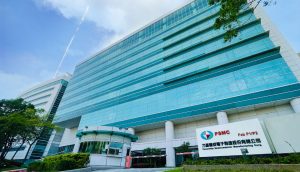Popular Keywords
- About Us
-
Research Report
Research Directory
Semiconductors
LED
Consumer Electronics
Emerging Technologies
- Selected Topics
- Membership
- Price Trends
- Press Center
- News
- Events
- Contact Us
News

As the demands for AI and HPC processors keep their momentum, driving the usage of advanced packaging technologies, TSMC revealed plans to further expand its chip-on-wafer-on-substrate (CoWoS) capacity at a compound annual rate (CAGR) of over 60% until at least 2026, according to a report by AnandTe...
News

Wafer foundries' mature process continues to suffer from oversupply, facing further price reduction pressure. According to a report from Economic Daily News, industry sources from IC design companies revealed that in this quarter, prices for certain mature processes have dropped by single-digit per...
News

Powerchip Semiconductor Manufacturing Corporation (PSMC) held the inauguration ceremony for its new Tongluo plant on May 2nd. This investment project, totaling over NTD 300 billion for a 12-inch fab, has completed the installation of its initial equipment and commenced trial production. According ...
News

Recently, according to sources from an official platform of Shanghai Construction No.4 (Group), Huahong Group has topped out the main building of FAB9 of the Huahong Manufacturing (Wuxi) project. This is reportedly the second phase project with a total construction area of about 530,000㎡, which i...
News

The Taiwanese semiconductor foundry Powerchip Semiconductor Manufacturing Corporation (PSMC) has held its earnings call and released its Q1 financial report. According to a report from Liberty Times Net citing information, with increasing capacity utilization, idle capacity costs decreased, boosting...